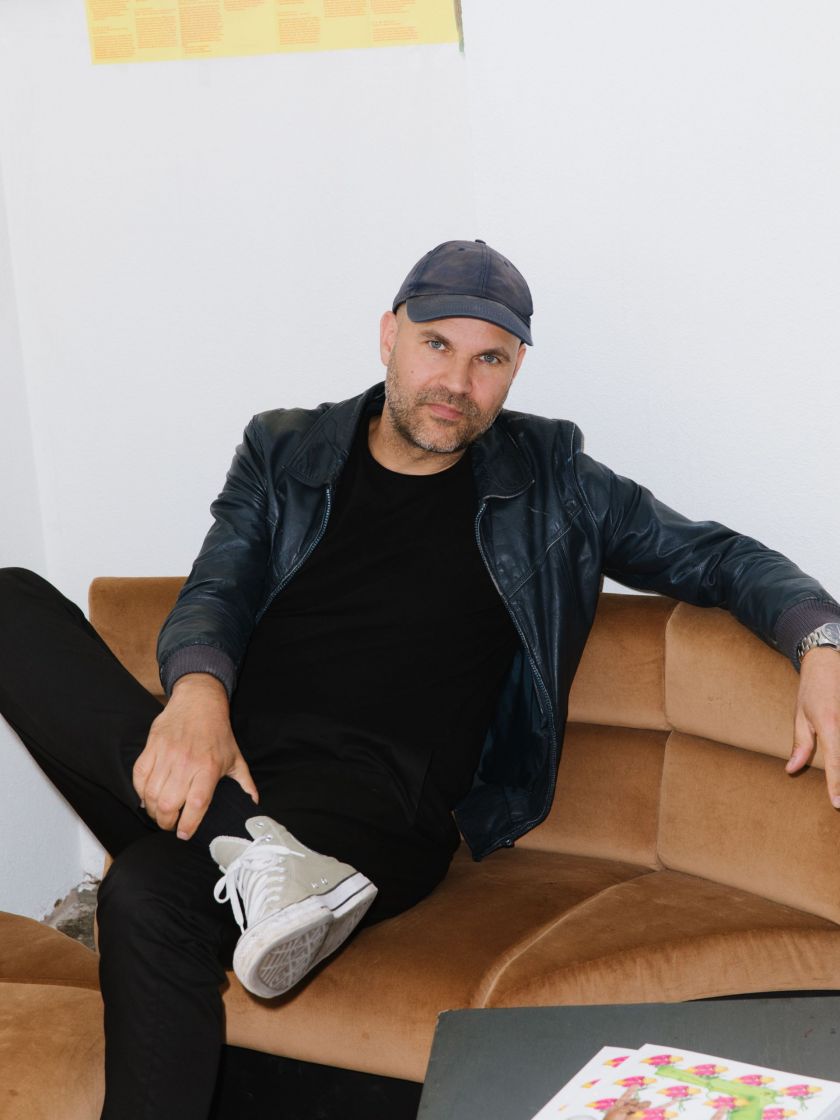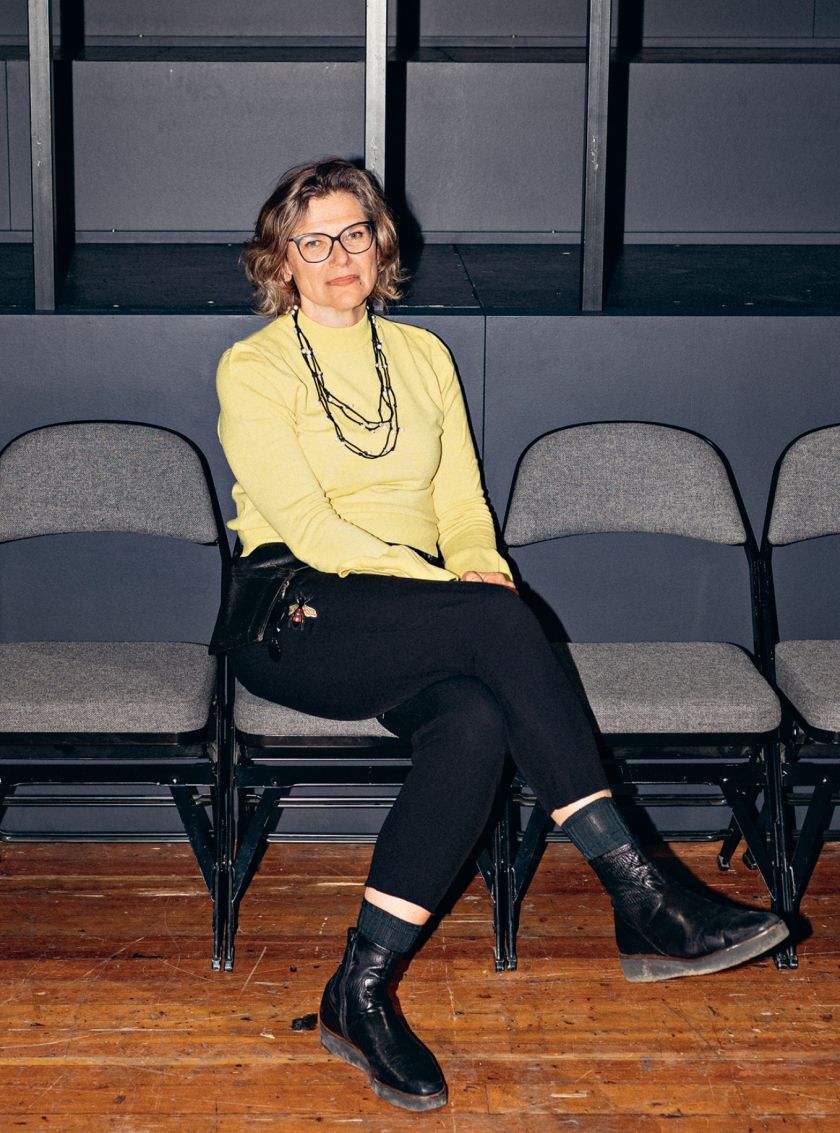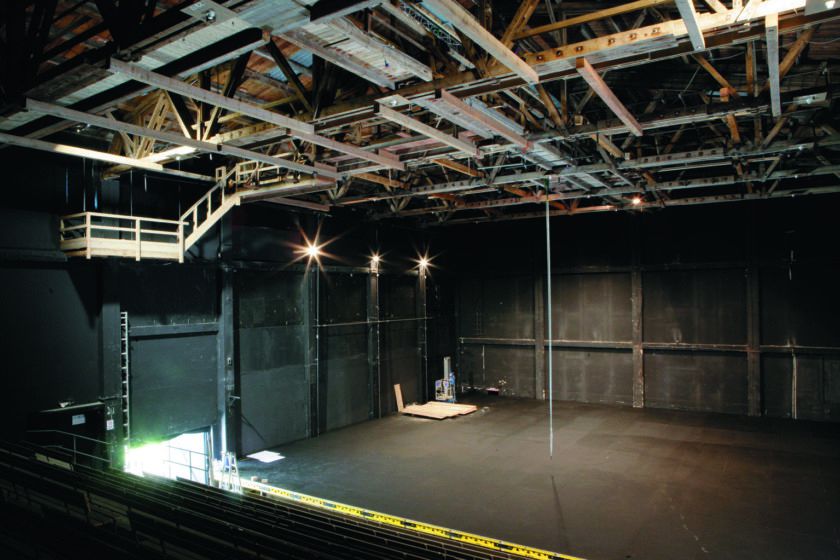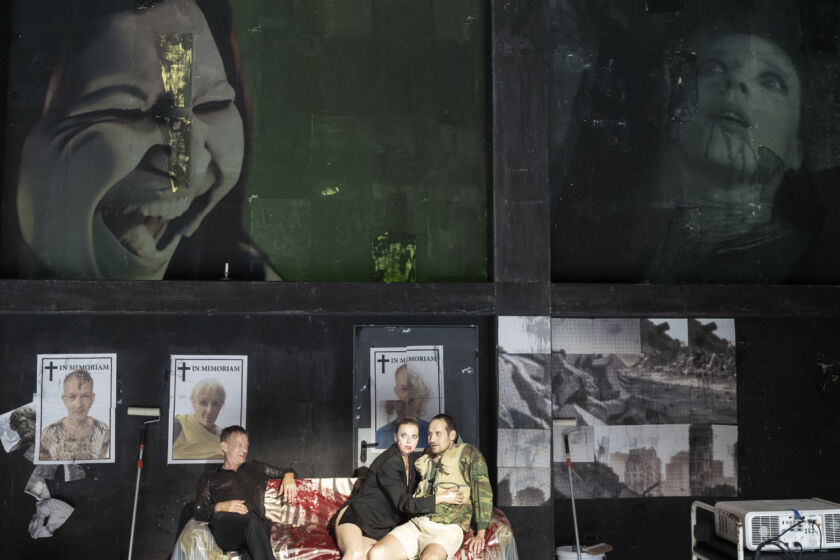“I don’t want to see my own ideas on stage”
„I’m an incredible materials fetishist and I am always searching for truth.“

The director Nicolas Stemann and the set designer Katrin Nottrodt will stage Die Orestie (Oresteia)“ at the Perner-Insel this summer. For thirty years, the two have had a “work marriage”, yet they are still able to surprise one another. Letting certainties go is something they are both good at, they say.
You have been working together continuously since 1995. What originally sparked your curiosity about each other?
Nicolas Stemann: We met as students, during my first study project. It was the first time I did something akin to directing. The Institute of Stage Directing was located at the Zeisehallen in Hamburg [the former compound of the Zeise shipyard], and there was a long industrial corridor which rather fascinated me as a space. I hung a lot of stuff in this corridor, including textiles that could fall from above. I thought: “That’s what theatre is, exactly such stage effects.” Katrin joined us later – she was in charge of lighting for the project – and said: “Why don’t you get rid of your whole stage-set rigmarole and all those textiles, that’s the only way the space will actually make an impression.” I did that, because I totally saw what she was saying. So even at our very first meeting, we started looking for something real in theatre, not just something merely decorative. Later we did a lot of projects on the independent scene, including my diploma piece in 1997, The Seagull at Kampnagel, a theatre in Hamburg. With that piece, we toured to very different places in Europe, and festivals too. Ever since, we have had what you might call a “work marriage”.

“Get rid of the whole rigmarole”: Nice that you were off to a self-confident start right at your first artistic encounter.
Katrin Nottrodt: (laughs) Basically I got rid of myself with that move, telling Nicolas to give away all the decoration. “How is it possible that the set designer does the exact opposite of what one would assume?”. That’s a valid question.
And your answer is…?
KN: I’m an incredible materials fetishist. I am always searching for truth, in the sense of: what is right for the space in question? This first meeting in that industrial space really marked our further collaboration. At the time, we had hardly any money. For budget reasons, but also due to a certain aesthetic, we had to create a theatre space with very little. From the beginning, we asked ourselves the questions, “What does it need? What makes sense? What do we have to focus on? Where is it important to anchor a piece in a location to create a truth and atmosphere?”.
NS: Since Katrin mentioned the reality of circumstances and rehearsal conditions: in the beginning, it was an important experience to create an aesthetic by confronting resistance, and that influenced us. The acoustics are bad? Then we use mikes. We have no budget? Then there will only be three tables in an empty room. This led to an aesthetic which can be seen everywhere today. To us, it was born of necessity. We don’t always need the maximum version, we can deal with what we find, even if we do very opulent productions together these days too – for example Riesenhaft in Mittelerde, which made it to this year’s Berlin Theatre Meeting.
This summer, you are staging Oresteia together at the Perner-Insel. How does that work? Does each of you approach the material individually, or does the exchange start right away?
NS: It’s a bit different every time. A sketch for the stage design has to be submitted very early, in any case, because most of the time it means complex things being built, workshop times have to be scheduled and budgets fixed. That is why every production starts with designing a space.
At this point, do you already know the text of the piece by heart?
NS: No, that’s exactly the point. Let me put it this way: it depends on what one is doing. Sometimes there is no finished text when you start, as is the case now with Oresteia. I am translating the text myself, so the final version will not even be finished in rehearsals. In my case, a lot of creation happens when working with the actors. In short, when we sit down for the first time, we don’t know enough to be able to design the space. At this point, we both have almost 30 years of experience with this dilemma, but this moment always remains challenging. One must make very essential decisions without really knowing what for, and at the same time one is making important decisions for the future.
KN: Very well described. It’s absolutely challenging. I listen very carefully to Nicolas, and often there are key words, for example: “Everything is open,” and that is something I can do a lot and work with. It is a slow, cautious approach to the material, even if I have studied Oresteia intensively. In this case, it helped me a lot that I had the Perner-Insel, that incredibly wonderful space, before my inner eye from the beginning.

When you first step into a stage space such as the Perner-Insel, do you immediately know what’s possible and what isn’t?
KN: To begin with, I take in the space as it is, looking for its qualities and possibilities. In the case of the Perner-Insel, the surface of the back wall, with its many traces of use and all its morbidity, interested me immediately. I also noticed right away that the view from the auditorium is directed towards the floor. That’s when I realized it has to have a surface. I had sketches with a reflecting floor. Then Nicolas and I met again, and he said: “Ah, that’s the sea.” That led to another development. I always work with great openness. The goal is to give the piece with all its many facets and stories different levels.
NS: There was only one time I was able to turn this process around, and that was with Faust: there, the staging came first, and then the stage set design. That’s what it looks like too, especially in the first part: some random doors from the warehouse that were almost falling apart, paint being splashed about, packing paper – it was so grungy, you can’t imagine. But it was great, for that very reason.
You know each other very well. Do you still manage to surprise each other?
NS: Yes, Katrin surprises and challenges me every single time, with things that come from very different places, not from me.
KN: Nicolas keeps surprising me; he’s a master at reversing signs.
That keeps the work lively, but maybe makes it difficult: how hard do you find it to adapt or even abandon your own visions and images?
NS: I think our work is distinguished by the fact that each of us is willing to let everything go, to turn everything upside down. We are both good at letting certainties go, because we have the experience that the result is always better than what we had before. That applies to working with the actors too, and with myself. This classical director’s theatre, where a director has an idea, puts it on stage and then thinks that’s great, is not my concept of theatre at all. I don’t want to see my ideas on stage. I want to be surprised. I want my ideas to be pulverized, modified and outdone. If you remain open throughout this process, good ideas have a way of returning all by themselves.
KN: That’s true. I find that one can recognize immediately whether a space, or also a directing concept, were simply invented, which makes everything seem set in stone. I can sense that immediately when I see works, and then I think: “Kill your darlings – that would have done you good. And thinking in the other direction too.”

Let’s return to Oresteia one more time. Aeschylus’ play illustrates what war does to people without showing any war scenes. A clever device, as it makes the war seem even more present.
NS: Aeschylus and other antique playwrights were confronted with the question of how to depict war. The piece is set in places where there is peace, and it shows the side of the winners. The basic setting is a victory celebration which doesn’t work out – absurd, when you think of it. The troops return and the war is won. But there is no joy or contentment.
And why not?
NS: Because perhaps people are not made for war after all – at least that is the slightly utopian shimmer of light in this trilogy by Aeschylus. People commit murder because they believe they are in the right, but then they are completely overwhelmed by their deeds. The war, all those murders, remain absurd, because they don’t give people the feeling of having restored justice. According to Aeschylus, people have to break out of this pattern of violence, revenge and retribution. But when you look at Euripides, just one and a half generations of playwrights later, there is nothing left of this notion. In his case, this story ends with slash-and-burn, no one is redeemed, everyone is screaming for revenge, and the supposed happy end with the deus ex machina who repairs everything can really only be read as irony and desperation. That’s very disillusioning. This whole complex, however, is extremely suited as a resonance room for the great question confronting us today: “How can we get out of this vicious circle?”
That is the question. The fact is that we are surrounded by war and violence, with no end in sight. How does one get a creative handle on this? How do you stage that?
KN: Like Francis Bacon [British painter, born in Ireland, died in Madrid in 1992] in his incredibly chaotic studio, we create our images of reality. We are thrown into a space and study the subject of war here and now. In doing so, we recur to everything that is on our mind. This extreme flood of images overwhelming us is a part of it. But to us, it’s not enough to say, let’s project digital images on the walls. We want to use and generate motifs, express them physically, paper the stage with them and tear them down again. It’s a bit of a cathartic process.
If you had your way: how should viewers leave the performance at the Perner-Insel?
NS: We are far from a stage where we can imagine the atmosphere in which the production ends. But it is always good when people are moved and touched. After all, we react to all the issues surrounding us all the time by blunting our senses. We are masters at repression – not unlike the chorus in Agamemnon, by the way. We hide within the bastion of things we think we know and all kinds of opinions – on the one hand, that is human, on the other, it’s brutal. Aeschylus says: humans are capable of more, and they want more. Perhaps we can manage to shift this carapace a bit – to translate all this knowledge back into a form that can be perceived sensually, so that people can open up again and regain their sensitivity.
KN: Yes, I have nothing to add to that.
Judith Hecht
Translation: Alexa Nieschlag
First published on 11.05.2024 in Die Presse Kultur Spezial: Salzburg Festival
